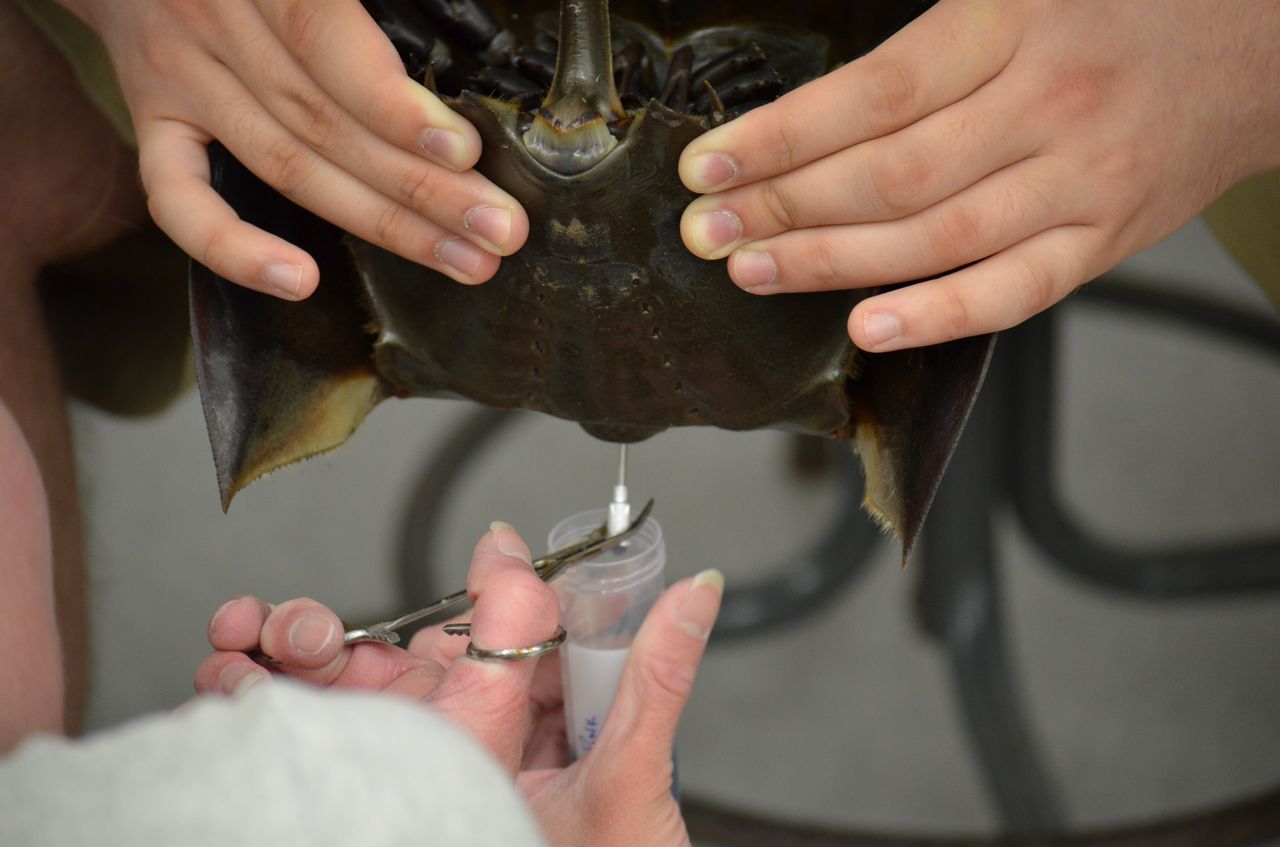Horseshoe Crab
Bleeding
The American horseshoe crab (Limulus polyphemus) is a keystone species in many estuarine ecosystems along the Atlantic seaboard, including Great Bay. This animal is also of great ecomomic value because its blood is used to produce a medically important product that is used to detect pathogenic bacteria. Although animals are released after they are bled, declining numbers of spawning Limulus females in heavily harvested regions suggests there are some deleterious effects of this harvest. Mortality rates due to biomedical bleeding range between 15-29% and those that survive and are released exhibit both behavioral and physiological deficits. The main objective of our experiments is to determine the behavioral and physiological impact of the stressors that occur during the biomedical bleeding process as a first step in their possible amelioration. Below is one of our publications but we have several additional studies underway!

Papers
2013 Anderson, R.L., W.H Watson, C. C. Chabot. The effects of biomedical bleeding on physiology and behavior of the American horseshoe crab, Limulus polyphemus. Biol Bull 225:137-151.PDF